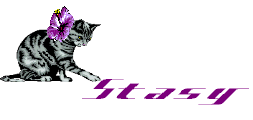


In 1988, Steve Roach’s “Dreamtime Return” was released. Considered by many to be a milestone recording by Roach, this release opened the floodgates for modern ambient music and introduced the didjeridoo to the civilized world. From Roach’s perspective, it became the premiere voice of his love for environmental soundscapes, stemming from his visit to the Australian continent and travels through of the remote Outback. In the ancient mythology of the aboriginal populace, he discovered a union of spirituality and resonance that transcended civilized meditation.
Seventeen years later, Roach reissues this classic release in a boxset that includes modern recordings that display the evolution of his music while retaining that majestic sense of grandeur.

STEVE ROACH: Dreamtime Return (double CD on Projekt)
Originally released in 1988, this double CD has been remastered for this 2005 reissue. It contains 131 minutes of ambient music steeped in Australian sentiments.
Joining Roach on this historic release are: Kevin Braheny on Steiner EWI (electronic woodwind instrument), David Hudson on didjeridoo, Chuck Oken Jr (from Djam Karet) on rainstick, Robert Rich on gourd drums and dumbek, and recordings of Australian songmen.
The music is a balanced mix of ambient soundscapes and more melody-driven compositions, most of which exhibit Roach's primal experimentations blending ethnic instruments with his electronic tapestries. Keyboards delineate strident riffs that interweave with denser-than-usual electronic textures. Sweeping with demonstrative disposition instead of wafting far overhead, these amorphous tonalities present themselves in far less ethereal manner than the vaporous ambience that one has come to expect from Roach.
The ethnic instruments provide the lush sense of an antediluvian environment to the tuneage, evoking arid landscapes and eternal conditions. A reverent quality permeates this music, as aboriginal rhythms blend with deep bass tones and eerie woodwinds. The conjunctive utilization of synthetic sounds with these ancient-sounding resonances creates a crisp union of science and nature.
Percussion plays a vital part in several of the tracks, propelling the tunes into a livelier mien than Roach's current output. Some of these rhythms pursue conventional tempos rather than the tribal beats that pepper much of his Nineties releases.
Predating the majority of Roach's vast catalog of releases, this music examples a formative bridge between then-contemporary EM and his modern, more delicate soundscapes. Far from primitive in structure or execution, "Dreamtime Return" is thrilling and timeless, a delightful dose of music that will satisfy both sides of the audience.

STEVE ROACH: New Life Dreaming (CD on Timeroom Editions)
This release from 2005 features 69 minutes of pleasant ambience.
Joining Roach on this CD are: Jennifer Grais on voice, Sam Rosenthal on processed and sampled piano, and Byron Metcalf on rhythmic sources.
Expansive textures generate a tenuous synthetic environment that seems limitless. Delicate tonalities pulsate in an unhurried manner, elongating until they fade from perception, only to reemerge and drift in pursuit of those earlier notes. The music becomes a promenade of flowing harmonics. Background textures amalgamate these parades into an unbroken stream of sedate drones that resemble fragile glass sculptures made out of air.
These tracks embody the period of time right before you start dreaming, as you lay on the brink of sleep, half in the real world and half in a nether realm of somnambulant perceptions. Accessing this junction point between worlds affords the listener an acute focus through the diffusion of concentration, opening a vast infinity of possibilities.
Often using his ethereal soundscapes as a bridge between the waking and slumbering worlds, Roach examines the fabric of reality through deep meditative trances that peel away materialistic values and reveal that everything exists as a flowing essence.
For all its vaporous mien, this music exudes a definite positivism, a relaxed ascension toward the light where interactive meaning is inescapable, revealing that stones and even time have souls.

STEVE ROACH: Possible Planet (CD on Timeroom Editions)
This CD from 2005 offers 73 minutes of hypothetical ambience.
Sedate resonances waft on breezes of synthetic origin, generating an artificial soundscape designed to approximate the ecology of an imaginary world. Elongated tonalities unfurl and superimpose themselves on each other, achieving a subtle density of aerial consistency. Softly growling diodes add a peripheral presence to the delicate ambience, manifesting as gritty mechanical sighs.
As if utilizing a global atmosphere as a sound chamber, Roach conjures ethereal minimalism that swells with psychological girth. Tenuous effects drift through the thin mix, mimicking insect rattlings amid a gentle surf of fragile zephyrs. Sounds that are reminiscent of breathing woodwinds emerge, gradually deepening into remote bass bellows that evoke echoing hillsides.
Hints of environmental sounds can be discerned laced into a passage of twinkling chords, approximating the advent of organic cells into the synthetic biosphere. As those chords dominate the flow, swirling in lazy cycles like atmospheric vortices, a feeling of complacent evolution is produced. The music finally reaches a stage in which the audience can consider themselves as participants, casting off their observational vantage and immersing with the steadfast accretion of complex life.
This entire recording was produced using only analog modular equipment; no keyboards were employed.

A review of another classic Roach reissue can be seen here.

| Entire page © 2005 Matt Howarth. All rights reserved. |
Webpage design by
 |